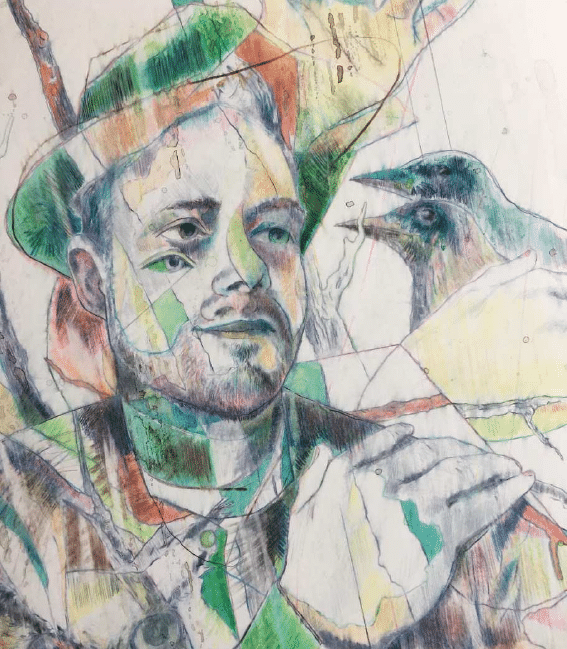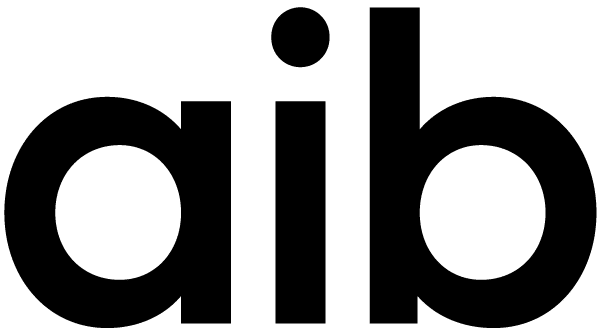This course is aimed specifically at art historians, artists, but also ambitious lovers of painting who are looking for a deeper understanding of the technique of painting.
For art historians, this offer is a valuable practical complement to their theoretical knowledge.
Painting grounds, paints, tools and brushes are provided. Apron, painting palette, drawing materials and tablet/laptop/smartphone are to be brought by each participant themselves
Your own preparatory work in the form of a graphite drawing of a simple still life in Din A4 is required. A leaflet on the preparation of the course will be provided at registration.
This course is for: Art Historians, Students, all interested persons
Contents: Practical examination of Claesz Heda’s painting technique
Structure: two-week summer/holiday course (Mon-Fri 10 a.m.-5 p.m.)
Methods: craft-oriented process with occasional theoretical explanations
Instructors:
Dipl. M.A. Simon Rosenthal
Simon Rosenthal is an artist, humanities and cultural scientist, art therapist and lecturer at the “Alanus University of Art and Society”. He has been presenting his works worldwide in numerous exhibitions since 2005. Focus and leading motivation of his work is the question of why something is art (and why not)- art in the context of society- and artistic fundamentals
Contact, Dates & Fees:
Dates: 11.-23.04.2022, limited to 9 participants
Contact: Sebastian Welter @ sw@aib-bonn.org
Price: € 865,00

As visual artists, we stand in the field of tension between various teachings and traditions of art, the world of politics, external symbols, the virtual world of images and information, and the work on our self-knowledge and individuation.
In this process, pictorial work can be helpful as a field of action and reflection of one’s own abilities and concerns, even – and especially if – one does not yet have a clear conception of it, but the urge to do exists. The canvas forms our audience, so to speak, with whom we enter into an open, playful dialogue in order to arrive at new impulses and images. We let everything we do on the canvas have an effect on us, meditate together, talk to each other about it, act and react sometimes intuitively, sometimes reflectively, create, overcome, reject and thus – little by little – develop a pictorial world – perhaps an individual, symbolist narrative. This can be abstract and representational at the same time.
This course is intended primarily for artists, art students, and ambitious enthusiasts of artistic work. For art therapists or art therapy students this offer is interesting among other things by the references to meditation and C.G. Jung’s concept of active imagination (and further development) of inner images.
All materials are to bring yourself. Painting should be on medium to large formats of canvas or other image carriers.
This course is for: Artists, students, educators, art therapists
Contents: Reflection and dialogue with the canvas
Structure: one-week summer/holiday course (Mon-Fri 10am-1pm, Sat 10am-6pm)
Imparted knowledge & Skills: Handling active imagination
Methods: Work on the canvas, Shared exchange and dialogue
Instructor:
Dipl. M.A. Simon Rosenthal
Simon is an artist, humanities and cultural scientist, art therapist and lecturer at the “Alanus University of Art and Society”. He has been presenting his works worldwide in numerous exhibitions since 2005. Focus and leading motivation of his work is the question of why something is art (and why not)- art in the context of society- and artistic fundamentals
Contact, Dates & Fees:
Dates: from 18-23.10.2021, limited to 12 persons
Contact: Sebastian Welter @ sw@aib-bonn.org
Price: tba

This offer is aimed at beginners as an opportunity for practice and further development, as well as an opportunity to work on the application portfolio for artistic studies. Advanced students can update and develop their skills with like-minded people and find artistic impulses and opportunities to connect in a stable group.
We work in all conceivable drawing techniques. Material must be brought along, but can be stored on site (without insurance).
This course is for: Beginners and advanced artists
Contents: Recording observations in drawings. In the process, we train the eye, hand, and concentration, study exterior and interior forms as closely as possible, observe activity and passivity of the pictorial space, abstract and formalize as needed.
Structure: Weekly (2 hours per session incl. breaks), 22 hours (+3 hours debriefing) in total, Tues. 18:00-20:00
Imparted knowledge & Skills: Capturing space, transferring what is perceived onto an artistic projection surface.
Methods: Nude drawing, practical work with different drawing techniques
Instructor:
Dipl. M.A. Simon Rosenthal
Simon is an artist, humanities and cultural scientist, art therapist and lecturer at the “Alanus University of Art and Society”. He has been presenting his works worldwide in numerous exhibitions since 2005. Focus and leading motivation of his work is the question of why something is art (and why not)- art in the context of society- and artistic fundamentals
Contact, Dates & Fees:
Dates:
August 6.-8. August 2021, and November 5.-7. 2021.
Fridays, 18:00- 20:00, Saturdays 09:00-19:00, Sundays 10:00-18:00
Contact: Sebastian Welter @ sw@aib-bonn.org
Credit Points: The course is in the certification process with Ibugi. Credit points will be updated soon.
Price: € 350,00

This course is for individuals who are in a biographical transition or who are looking for the experience of getting closer to themselves observing, feeling and forming. Young artists working on their application portfolio can also gain preliminary experience and work samples here.
The sculptural work expands the pictorial space by the third dimension, appeals to all our senses and sets a moment of reflection that can be experienced with eyes and hands. This technique is particularly suitable for participants who are attracted by this haptic experience. Grasping and grasping are close to each other here.
Counseling and individual discussions take place as needed and during the work. According to group constellation, group discussions are also possible, but not mandatory.
Clay and tools are provided. An apron Mirrors (at least 70×50 cm to hang on the wall or with tripod) are to be brought by the participants themselves and can be stored (without insurance).
This course is for: young artists, art therapy students, people in biographical transitional phases
Contents: Sculptural confrontation with one’s own self
Structure: Weekend course (Fri 6-8 p.m., Sat 9 a.m.-7 p.m., Sun 10 a.m.-6 p.m.)
Imparted knowledge & Skills: Dealing with biographical transitional phases as well as self-reflection through sculpture
Methods: Plastic work with clay, practical self-reflection
Instructor:
Dipl. M.A. Simon Rosenthal
Simon is an artist, humanities and cultural scientist, art therapist and lecturer at the “Alanus University of Art and Society”. He has been presenting his works worldwide in numerous exhibitions since 2005. Focus and leading motivation of his work is the question of why something is art (and why not)- art in the context of society- and artistic fundamentals
Contact, Dates & Fees:
Starting date: September 10.-12 2021 and February 25.-27. 2022
Contact: Sebastian Welter @ sw@aib-bonn.org
Price: € 330,00

On the basis of the painted portrait we deal with these issues, we meditate painting on the counterpart, practice the old-fashioned virtues of concentration, care, dedication, diligence and in the precise observation and translation of what is seen in figurative painting.
Each course participant can choose to work intensively on just one, or to produce several works. In the end, the decisive factor is how close we have come to what we have seen/observed in each case and to what extent the other course participants can also recognize our you – our model in it.
For beginners it is meant as an exercise, for advanced students as an opportunity to deepen ability and skill. Correction and individual support takes place during the work.
Painting is preferably in oil technique, but it is also possible, depending on individual affinity, casein, tempera and acrylic techniques and drawing techniques. However, you should choose the technique in which you know best. Material everyone brings themselves (but can be stored uninsured). Canvas size should not exceed 60×50 cm.
Canvas quality at least as Gerstaecker Studio stretchers. For oil technique: rags of non-fluffy cotton, safflower oil (safflower oil) or walnut oil, painting medium1 of Schminke-Mussini, oil paints at least in quality of Daler-Rowney Georgian.
Natural bristle brushes and hair brushes medium to small at least in the quality of Gerstaecker Holgon.
Brushes, paints, canvases/painting grounds, 3 screw-in jars. There is a materials list attached to the course description.
This course is for: Beginners to advanced
Contents: Practical and reflexive examination of portrait painting
Structure: Weekend course (Fri 6-8 p.m., Sat 9 a.m.-7 p.m., Sun 10 a.m.-6 p.m.)
Imparted knowledge & Skills: Practice and deepening of portrait painting skills
Methods: Portrait painting in the respective own technique under individual supervision and correction
Instructor:
Dipl. M.A. Simon Rosenthal
Simon is an artist, humanities and cultural scientist, art therapist and lecturer at the “Alanus University of Art and Society”. He has been presenting his works worldwide in numerous exhibitions since 2005. Focus and leading motivation of his work is the question of why something is art (and why not)- art in the context of society- and artistic fundamentals
Contact, Dates & Fees:
Starting date: August 20-22, 2021 and November 19-21, 2021
Contact: Sebastian Welter @ sw@aib-bonn.org
Price: € 245,00

This course is well suited, for example, as a balance to a mainly IT-based, mental-social or high-precision craft work, for lovers of creative crafts and, of course, for art therapists and students interested in integrative and inclusive work techniques.
Materials will be provided, please bring an apron.
This course is for: students, art therapists, interested people, individuals in phases of change
Contents: Processual work with mosaics
Structure: Weekend seminar (Fri 18-21 h, Sat and Sun 10-16:30 h)
Imparted knowledge & Skills: working with mosaics
Methods: mosaic work from the crushing of the tiles to the grouting of the mosaic
Instructor:
Dipl. M.A. Simon Rosenthal
Simon Rosenthal is an artist, humanities and cultural scientist, art therapist and lecturer at the “Alanus University of Art and Society”. He has been presenting his works worldwide in numerous exhibitions since 2005. Focus and leitmotif of his work is the question of why something is art (and why not)- art in the context of society- and artistic fundamentals
Contact, Dates & Fees:
Starting date: Possible from the end of the Easter holiday, limited to 12 people.
Contact: Sebastian Welter @ sw@aib-bonn.org
Price: € 330,00

We approach the goal of creating a meaningful portfolio in individual coaching sessions. In the process, we develop themes and approaches for further action from existing work samples and/or conversations.
It is important to understand that not everywhere “fine art” or “painting” is understood to mean the same thing. The portfolio consultation can therefore not guarantee success in the application, but can significantly increase the probability.
This course is for: Young artists
Structure: individual consultation hours
Imparted knowledge & Skills: How to create a convincing portfolio
Methods: individual coaching
Instructor:
Dipl. M.A. Simon Rosenthal
Simon Rosenthal is an artist, humanities and cultural scientist, art therapist and lecturer at the “Alanus University of Art and Society”. He has been presenting his works worldwide in numerous exhibitions since 2005. Focus and leitmotif of his work is the question of why something is art (and why not)- art in the context of society- and artistic fundamentals
Contact, Dates & Fees:
Starting date: ongoing
Contact: Sebastian Welter @ sw@aib-bonn.org
Price: € 90,00 for 90 minutes

Sketching can not only be the basis for the creation of a complete work – it also serves as an unbeatable tool for painters, graphic artists and illustrators in finding and expressing their own artistic language.
This course is for: Students, illustrators and interested artists
Structure:1 week during summer break (mo.-sa. 10-16)
Imparted knowledge & Skills: Acquisition and formulation of an individual sketching technique
Methods: Practical, theoretical and experiential exploration of the medium of drawing and its expressive possibilities.
Instructor:
M.A. Sebastian Osterhaus
Sebastian is a freelance artist and art educator who has won numerous awards and exhibits his art throughout Europe, most recently at THE HOLY ART Gallery in London, UK. In his works, he particularly uses cross-media and cross-genre means of representation that correspond to the concern of contemporary, powerful and innovative painting.
Contact, Dates & Fees:
Starting date: 2021 tbd. (Limited to 10 participants)
Contact: Sebastian Welter @ sw@aib-bonn.org
Credit Points: The course is in the certification process with Ibugi. Credit points will be updated soon.
Price: € 575,00

This wealth of facets will be examined and explored together in a one-week course, both theoretically and practically. The course should be an exciting field of experimentation for students, artists of various genres, art therapists and art educators who are looking for an artistic as well as thematic examination of our relationship to the subject of ” human and animal”.
This course is for: Students, artists of various genres, art therapists and art educators
Contents: Theoretical and artistic-practical examination of the human-animal relationship
Structure: 1 week during summer break (mo.-sa. 10-16)
Imparted knowledge & Skills: Artistic exploration of the human-animal relationship and theoretical knowledge of its significance in art history.
Methods: Practical, theoretical and experience- and sensation-oriented examination and reflection
Instructor:
M.A. Sebastian Osterhaus
Sebastian is a freelance artist and art educator who has won numerous awards and exhibits his art throughout Europe, most recently at THE HOLY ART Gallery in London, UK. In his works, he particularly uses cross-media and cross-genre means of representation that correspond to the concern of contemporary, powerful and innovative painting.
Contact, Dates & Fees:
Starting date: 2021 tbd. (Limited to 10 participants)
Contact: Sebastian Welter @ sw@aib-bonn.org
Credit Points: The course is in the certification process with Ibugi. Credit points will be updated soon.
Price: € 575,00

Please contact us for more information: further-education@aib-bonn.org

